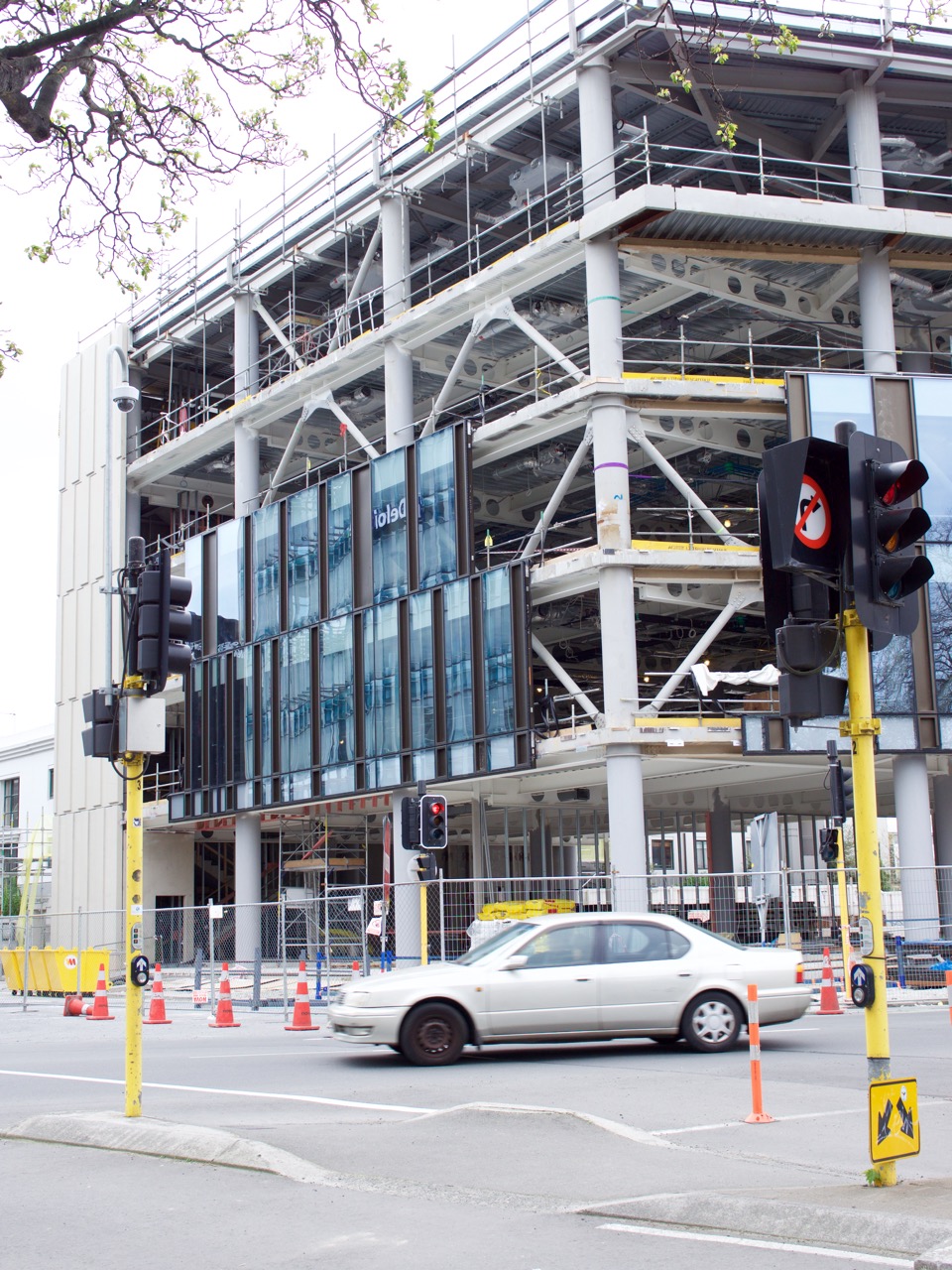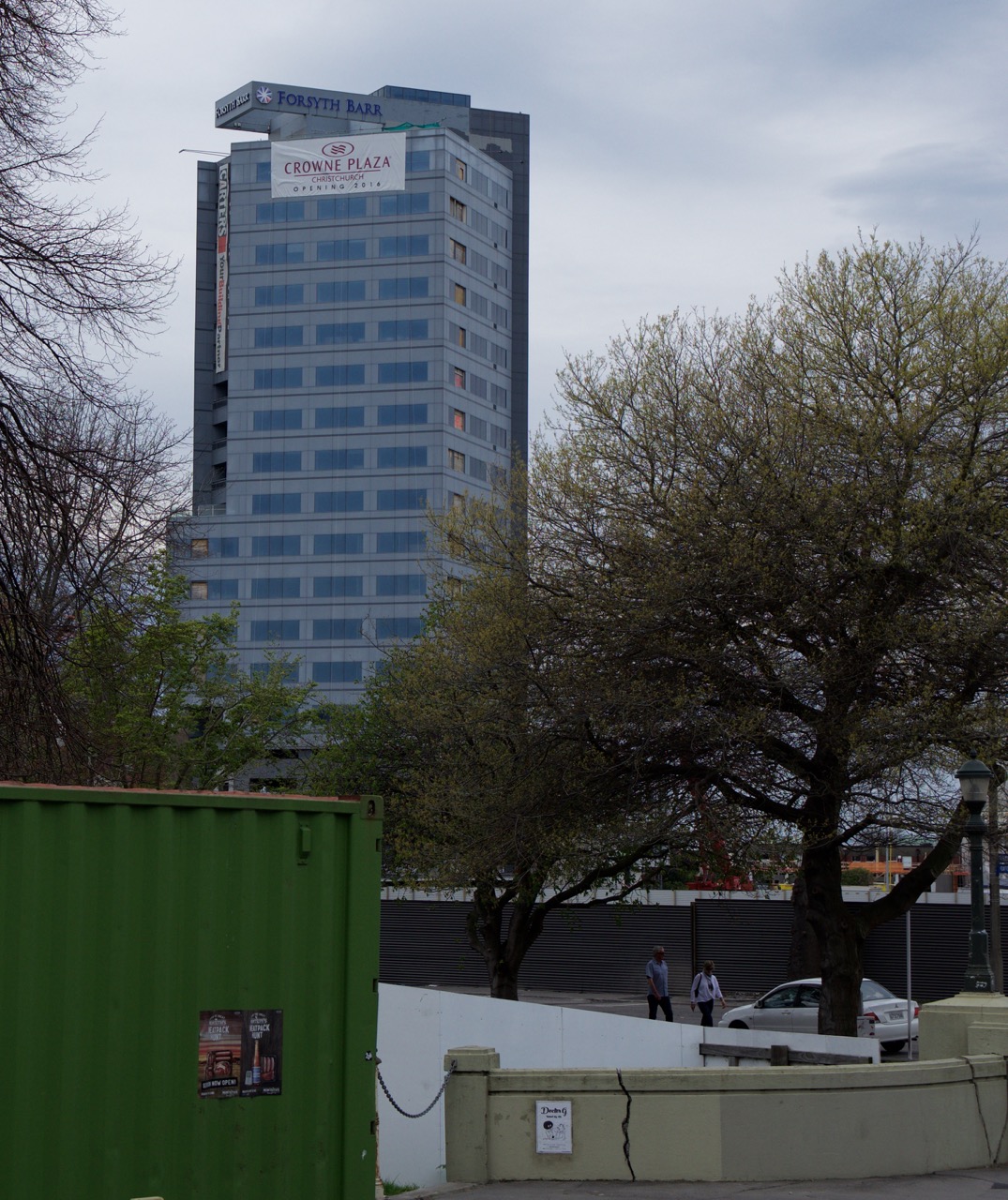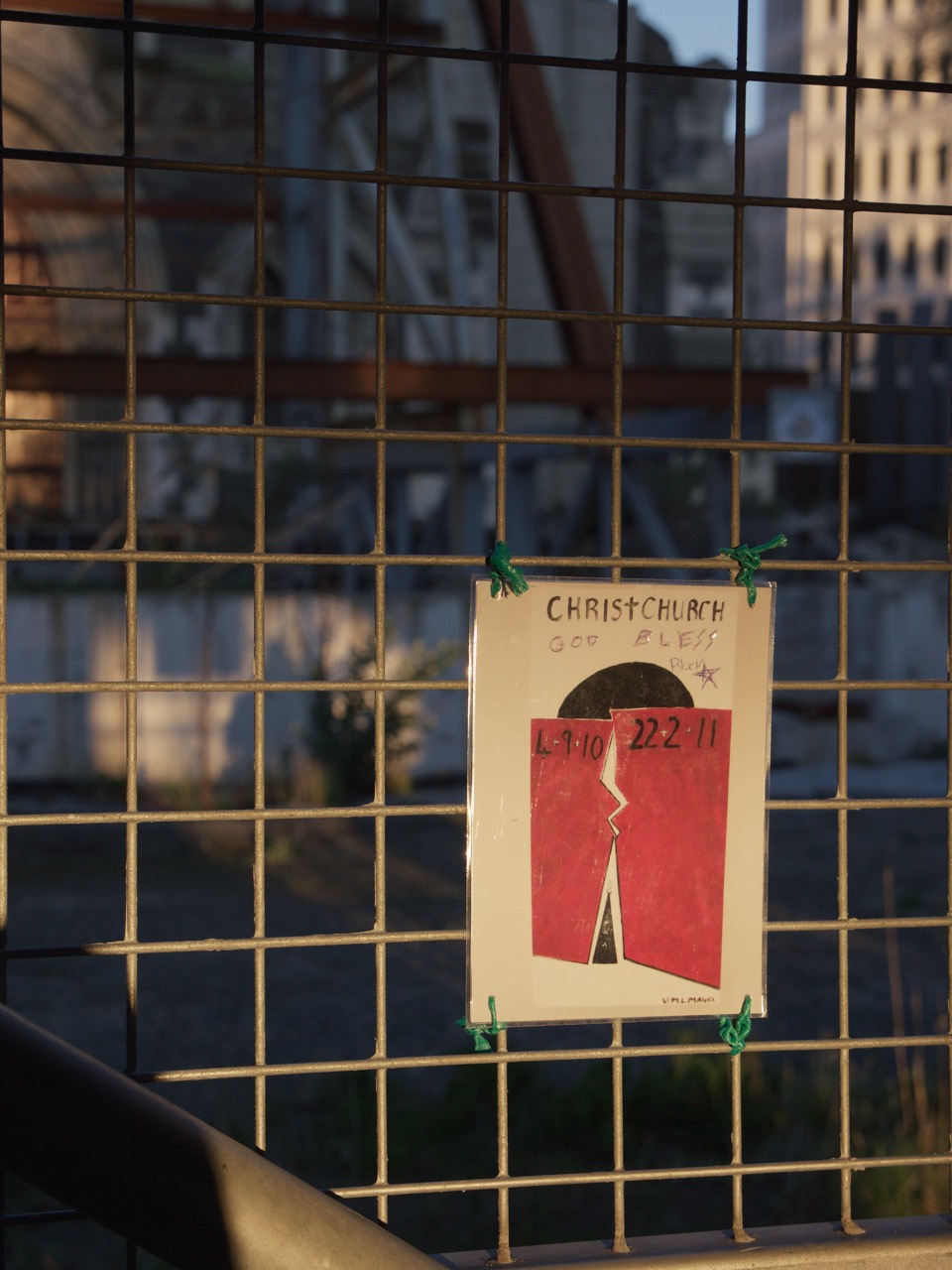The second and final city on the South Island of New Zealand that we visited was Christchurch. You may have heard about it being hit by an earthquake a few years ago, though in reality it’s been hit with several, including two really big ones less than a year apart. Today, the result of the quakes is what defines the city, and I was in awe of the destruction.
Having never been to Christchurch before, I can’t say for sure what it was like before. But I know its modern history dates back at least 150 years. The city felt really sprawled out. It didn’t have a dense central business district like Auckland and Wellington had. I’m sure it felt more dense before the quakes, but overall the city reminded me of Fort Collins back in Colorado (if you blew up 100 bombs on Fort Collins’ best parts, whatever those are). It doesn’t seem to be designed to be walkable, and feels like if you live there you’d really need to have a car.
Since it made such an impression on me, I’m going to tell you a little about the earthquakes. First, like I said, there were two main quakes recently, one in 2010 and one in 2011. Some seismologists actually consider the big 2011 quake to have been an aftershock of the 2010 quake, though others say it was long enough later and on a slightly different fault that it should be considered separate. The 2010 quake did a lot of damage. Some big buildings were destroyed or so shaken up that they needed major structural work. But then the 2011 quake came along as the second punch, leveling many of the buildings that had been weakened in 2010.
There were two “red zones” that mean different things with respect to the 2011 quake.
In one context, “red zone” refers to an area of the residential part of the city where the ground is so unsafe that the government (“the crown” as they call it in New Zealand) bought all the property and made it illegal to ever build houses there ever again. In the other context, when the earthquake in the city center caused hundreds of buildings to partly or fully collapse, the response teams blockaded the entire area and didn’t let civilians in for months, while they tried to rescue survivors and then later recover bodies. I got some photos of both of these red zones.
Here are some shots showing the residential red zone. This is an area where housing developments had been created on very low lying, sandy soil, just barely above sea level. When both quakes hit, in 2010 and 2011, there was soil liquefaction, which means the solid ground turned essentially into a quicksand of black sand, water, and sewage. This liquid oozed up from the ground instantly as the buildings all sank down into it as much as a meter. People in this area who escaped their homes in the middle of the night found that they couldn’t evacuate by car because all the streets were buried a meter deep in this black goo. Eventually, most of the people got to safety and moved elsewhere, while their homes were written off by insurance and then demolished.

To drive and walk through this area now is eerie. There are city streets, sidewalks, power lines, and even street lamps. But all that’s left of each house lot is just the trees, with no house or foundation visible. You can see where the foliage separated the houses for decades, but the houses that are “supposed” to be in the center of each lot are simply missing.
Nobody lives here now, obviously, so there are no buses that go here and the government will no longer maintain the streets. So over time this will all revert to a more-or-less natural looking environment.

Side note: I read that when the original people arrived here about 800 or 1000 years ago, this area was fully wooded. The trees kept the sandy soil intact. These early inhabitants hunted the moa, which are the giant flightless birds that once lived all over New Zealand. After hunting them to extinction, these moa hunters turned to an agricultural way of live, and chopped down or burned all the trees that were here. So by the time Europeans arrived, the landscape here was devoid of trees and just had low shrubs and grasses, “bush” as they call it here. There are ongoing debates about what to do with this red zone now that the government has decided nobody can build on it. Mother nature is going to take it back over one way or another, but should people help that process? And should they coax it into the original forest or into the more recent bush?
Now on to the other red zone. Most of the deaths from the 2011 earthquake were in the city center. In fact, a big chunk of them were in a single building that catastrophically collapsed even after it had been inspected and certified earthquake-safe after the 2010 quake. The local first response teams jumped into action, and were supplemented by the New Zealand armed forces as well as disaster response teams from Australia, Japan, The United States, England, and several other countries. They were able to rescue some people from the rubble in the first couple days, but after that they switched from rescue to recovery. The entire center of the city was closed off.
Once the initial disaster response was over, the long process of deciding what to do with the city started. The government inspected buildings, took ground measurements, and then made a list of which buildings would be demolished and which would be repaired. So what I saw in Christchurch was the city about four years into this rebuilding process. There are a lot of huge vacant lots where office buildings, apartments, stores, etc. once stood. You look around and it’s just city block after city block of just dirt, or maybe a block that once had a dozen buildings and only one still stands. A lot of buildings have already been demolished, some are currently in the process of being demolished, and some are just left standing there with chain link fence around it to keep people out.


It’s like a ghost town or a war zone in some ways. But people still live here, and a lot of new things have cropped up, like flowers that bloom the spring after a big forest fire. For instance, you wouldn’t believe the number of shipping containers that have been put to use in this place. There is an entire shopping mall that was built to replace the one that was demolished, and the new mall is all shipping containers. Clothing stores in shipping containers, falafel stands in shipping containers, coffee shops in shipping containers, and even three banks in shipping containers.

The city is filled with other temporary buildings, too, the kind you normally see at construction sites, but here they are by the hundreds. And I’ve never seen so many cranes in a single city before. I visited a barber one day and he told me Christchurch has essentially zero unemployment. If you can do any kind of construction work, they need you. A friend of his offered him a part time job driving a fork lift on his day off from being a barber, for instance (he turned it down). And they’re flying in construction laborers by the thousands from the Philippines and Ireland. The government put up a bounty for any New Zealand citizen who will relocate to Christchurch to work in the reconstruction. They’ll pay their travel expenses and give them a 3000 dollar bonus just to sign up. That’s how much help they need here. They’re serious about rebuilding this city, and it’s going to take decades. I read somewhere that economists expect that the financial impact of the 2011 earthquake will take between 50 and 100 years to absorb.
So the people are resilient and dedicated. But I still felt really sad to see the amount of destruction left from the quakes. There were so many beautiful buildings, like the big Anglican cathedral that gives Cathedral Square its name. It was damaged already in the 2010 quake, and then the 2011 quake was a knockout punch.
The church and “the crown” and the citizens are still arguing about the ultimate fate of the cathedral — knock it down and build a new one, knock it down and build a memorial, etc. But it’s pretty clear it’s never going to be the same.





































Great pictures; sad story. At least the community is resolved to rebuild, one way or another. I wonder if the New Zealand government would hire American construction workers??